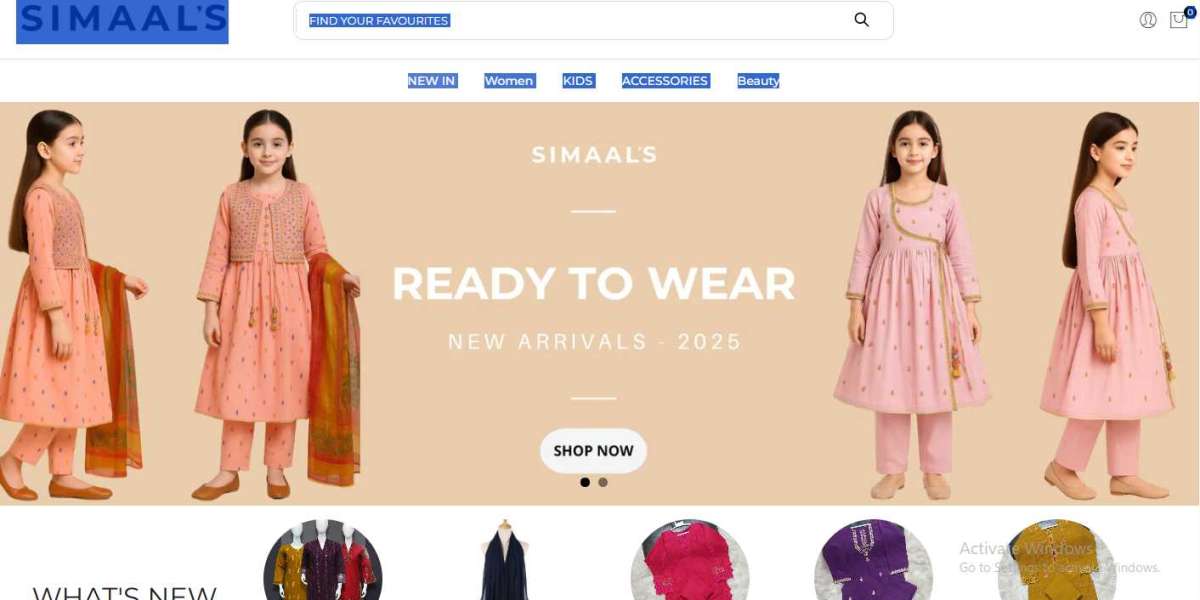In recent years, Pakistan has witnessed a dramatic transformation in its retail landscape, driven by the rapid rise of online shopping. As internet penetration increases and smartphone usage becomes ubiquitous, consumers across the country are embracing the convenience and variety offered by e-commerce platforms. This shift not only reflects changing consumer preferences but also signals the potential of Pakistan's digital economy. In this article, we explore the key drivers, trends, challenges, and future prospects of online shopping in Pakistan.
1. Evolution of E-Commerce in Pakistan
Online shopping in Pakistan began to gain momentum in the early 2010s, with websites like Symbios, Homeshopping, and Daraz leading the way. At first, limited internet access, lack of trust in online payments, and logistical constraints hindered growth. However, over the past decade, several factors have contributed to the sector's expansion:
Increased Internet Access: With over 120 million internet users and growing 4G coverage, more Pakistanis have access to online platforms than ever before.
Smartphone Penetration: The affordability of smartphones has allowed users to shop on-the-go, making e-commerce more accessible.
Digital Payment Solutions: The emergence of fintech startups and mobile wallets like JazzCash and Easypaisa has simplified transactions.
Logistics and Delivery Improvements: Companies have invested in better delivery networks, even reaching remote areas.
2. Popular Categories in Online Shopping
Pakistani consumers shop online for a wide range of products. The most popular categories include:
Fashion and Apparel: Clothing, shoes, and accessories dominate online purchases. Many local brands like Khaadi, Gul Ahmed, and Sapphire now offer full e-commerce experiences.
Electronics and Gadgets: Smartphones, laptops, and home appliances are in high demand.
Groceries and Essentials: Especially during the COVID-19 pandemic, platforms like GrocersApp and Metro Online saw increased usage.
Beauty and Personal Care: Consumers are increasingly buying skincare, cosmetics, and grooming products online.
3. Role of Social Media and Influencer Marketing
Social media has played a crucial role in promoting online shopping in Pakistan. Platforms like Facebook, Instagram, and TikTok are not just for entertainment—they are powerful marketing tools. Small businesses use social media to reach customers directly, often bypassing the need for a dedicated website.
Influencer marketing is also on the rise. Local influencers showcase products, provide reviews, and offer discount codes, creating a new level of consumer engagement. This trend has enabled many startups to grow rapidly without heavy investment in traditional advertising.
4. Cash on Delivery: A Double-Edged Sword
One of the main reasons for the success of online shopping in Pakistan is the prevalence of Cash on Delivery (COD). While COD has made e-commerce more accessible to consumers wary of digital payments, it also presents challenges:
High Return Rates: Customers may reject packages upon delivery, leading to losses for sellers.
Operational Costs: COD involves additional logistics and handling costs.
Nonetheless, it remains a preferred payment method, especially among first-time buyers and those without access to banking services.
5. The Impact of COVID-19
The COVID-19 pandemic acted as a catalyst for the growth of online shopping in Pakistan. With lockdowns in place and physical stores closed, consumers turned to e-commerce for their needs. This period saw a spike in demand for groceries, hygiene products, and home entertainment.
Many businesses that previously had no online presence quickly adapted by launching websites or partnering with delivery platforms. This digital acceleration is likely to have a lasting impact on consumer behavior.
6. Government and Policy Support
Recognizing the importance of e-commerce, the Government of Pakistan introduced the E-commerce Policy Framework in 2019. The policy aims to:
Promote digital infrastructure
Facilitate cross-border e-commerce
Support small and medium enterprises (SMEs)
Enhance consumer protection
While progress has been gradual, ongoing efforts to improve digital literacy, payment systems, and logistics are encouraging signs for the industry.
7. Challenges Facing Online Shopping in Pakistan
Despite its rapid growth, the online shopping sector in Pakistan faces several challenges:
Trust and Fraud: Concerns about fake products, scams, and poor customer service deter some consumers.
Payment Infrastructure: Although improving, digital payment adoption is still limited.
Logistics and Delivery: Timely and efficient delivery remains a hurdle, especially in rural areas.
Regulatory Framework: Clear regulations on taxation, data privacy, and consumer rights are still evolving.
8. Future Outlook and Opportunities
The future of online shopping in Pakistan looks promising. Key trends likely to shape the sector include:
Mobile-First Experiences: With most users accessing the internet via mobile, apps and responsive websites will dominate.
AI and Personalization: E-commerce platforms will increasingly use artificial intelligence to offer personalized recommendations.
Omnichannel Retailing: Integration of online and offline experiences will become more common.
Cross-Border Trade: Pakistani sellers may find new opportunities by tapping into international markets.
Startups and investors have a significant role to play in driving innovation, improving user experience, and expanding services.
Conclusion
The rise of online shopping in Pakistan is a reflection of broader shifts in technology, consumer behavior, and business models. As the ecosystem matures, it will open up new possibilities for entrepreneurs, improve convenience for consumers, and contribute to the country's economic growth. However, realizing the full potential of e-commerce will require continued investment in infrastructure, policy support, and trust-building among all stakeholders. The journey has begun, and the future is digital.






